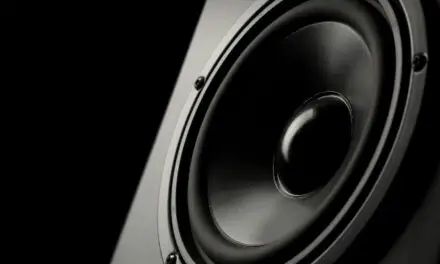Listening to wireless headphones can cause compression headaches in some people If they are worn too tightly around the head.
The clamping force over your ears and around your head can cause pain by putting pressure on the skull’s temporal bone and stimulating the trigeminal and occipital nerves that live just underneath the skin around the head and neck.
But it’s not just the snug fit of headphones that can cause headaches.
ANC (active noise cancellation) headphones can also trigger headaches by pumping anti-noise sound waves into your ears and creating a feeling of pressure and discomfort in the inner ear.
There is also a risk that wireless Bluetooth headphones could potentially trigger headaches by emitting electric and magnetic-field radiation (EMF) into your head through transmitters in their earbuds.
There are various aspects of the audio chain, such as codecs used for compression, headphone amplifiers used to raise low-voltage audio signals, and transducers used to turn an electrical signal into sound.
And depending on how sensitive you may be, exposure to one or more of these parts of the audio chain could potentially trigger a headache or migraine.
Two people could use the same set of headphones with one experiencing a headache and the other having no issues at all.
It’s similar to people’s experience with travel sickness.
For instance, you could pose the question, does reading while riding in a vehicle make you sick?
Well sure, for some people.
Other people can read upside down with their feet on the headrest for hours while the vehicle drives around in figure eights.
Often, all you can do is try out different brands, different types of headphones, and different music-playing devices until you find a pairing that doesn’t trigger you as much.
The science behind compression headaches—caused by over-the-head listening devices—is pretty clear, while the science behind Bluetooth and noise-canceling headphones is still very much in its infancy and definitive answers aren’t forthcoming.
But headphones aren’t the only cause of headaches and there are other things that you may not release you are doing (like sitting with bad posture) that can make a headache worse or even be the main cause of one.
Table of Contents
What Does The Science Say About Headphone Induced Headaches?

If you spend a lot of time online researching possible health issues linked to Bluetooth, you’ll discover that some people say it’s harmless while others are as skeptical of Bluetooth as they are of 5G.
The truth is, when it comes to Bluetooth, we don’t know and neither does science and certainly not the armchair skeptics.
The Two Types Of Headphones Most Likely To Cause Headaches
There are two primary areas of focus—when it comes to headphones—where headaches are an issue for some.
Noise-Canceling Headphones
Some aggressive types of noise-canceling headphones can trigger headaches in some people.
With these types of headphones, there can be a phenomenon known as “ear-suck.”
Since there’s no actual pressure increase against the eardrum, active noise-cancellation sometimes fools the brain into thinking that there is.
Since the brain assumes that the eardrum is decompressing and under stress, pain can be created psychologically.
Like a placebo, if the brain believes it exists, then it exists.
Switching to less aggressive types, like the Sony MDR-XB950N1 can help matters.
Or picking up a set of etymotic headphones, like the ER3XR, would be even better.
Many people who find active noise-canceling headphones (ANCs) to cause headaches as the result of a pressure sensation in your inner ear, find it beneficial to change to a type of headphones called etymotics.
Etymotic headphones, like the ER3XR, are designed to be inserted deeper into the ear canal, providing higher noise isolation and better clarity.
Over-The-Head Headphones
Over-the-head is quite different because it is altogether a real and physical thing.
Compression on the head, temples, and upper jaw is known to cause headaches.
Most of the time, the solution is to simply loosen the head apparatus so that it’s not so tight-fitting.
Sometimes, no level of adjustment helps and some people simply can’t wear them.
What’s The Difference Between Active Noise-Cancelling And Passive Noise-Cancelling?
Active Noise-Cancelling uses speakers embedded in the headphones to blast sound waves outward to block incoming sound.
Passive Noise-Cancelling uses well-designed earpieces to seal the inner ear from ambient noise.
The difference is important for those who experience headaches without knowing the difference and which type of headphones they’re using.
If noise-cancellation is important, and you’re experiencing headaches, try switching to another type of headphone.
For you, passive may not be near as psychologically impactful as active and vice versa.
It may be that one type is easier for you to listen to, both types cause you headaches, or none at all, but knowing the difference—and which to use—may be enough to reduce the risk of headaches in the future.
You Might Also Like: Can a TV Get a Virus from a USB? (And What To Do)
Can Bluetooth Headphones Cause Headaches?
Bluetooth is a handy technology that uses radio frequencies to help us connect devices wirelessly.
Although not as strong as cellular, Bluetooth still emits EMF (electric and magnetic field) radiation that can potentially cause headaches when close to your brain.
This can be more of a concern when using wireless Bluetooth headphones as they usually contain transmitters in their earbuds that send EMF radiation directly into your head.
But the evidence is far from conclusive.
Here is where the science gets muddled and the lines of division between proponents for and against Bluetooth technology are very dark indeed.
What is known for certain is that Bluetooth is a form of low-level radiation.
Proponents for Bluetooth will say that we are constantly surrounded by low-level radiation, even when we go outside and into the sun.
When discussing the potential side effects of Bluetooth headphones, the terms non-ionizing radiation and ionizing radiation are key.
Here are some examples of Ionizing radiation, which is the more dangerous of the two:
- Sunlight UV Rays.
- X-Rays.
- Tanning Beds.
Ionizing radiation can separate electrons from atoms, something we don’t want to happen inside our bodies.
Non-ionizing radiation, especially in low/weak levels, is not considered dangerous.
Examples of non-ionizing radiation:
- Bluetooth.
- WiFi.
- Microwaves.
- MRIs.
- Cellular technology.
There is conflicting science on the potential damage that wearing Bluetooth headphones can damage your brain (and cause side effects such as headaches), but the majority points to the idea that Bluetooth damage is negligible.
And if Bluetooth really was causing you to have headaches, then it would stand to reason that other devices which produced even higher levels of this type of radiation – like cellular phones, Wi-Fi routers, microwaves, and CCTV cameras – would also affect you.
But, as mentioned earlier, the fact that wireless Bluetooth earbuds transmit EMF radiation through your head causes a little more cause for concern.
Why Is The Science Conflicted?
There is currently zero evidence that Bluetooth damages the brain, however, a certain segment of scientists insist that there is the question of whether or not Bluetooth causes long-term, damaging effects.
The FDA and the CDC correctly note that brain cancer rates have not increased, despite the increasing frequency of such devices being used.
Advanced wireless technology has been around for only about 17 years so there are no conclusive studies about their effects on health or lack thereof.
But keep in mind that there are some very smart and highly regarded scientists that choose to use the speakerphone when answering calls and not press their phones up to their ears.
Some even choose not to carry a phone in their pocket for extended periods.
However, the most recent studies on the possible health implications of wireless technology have shown to be inconclusive, at best.
In one study, some evidence was found that non-ionizing radiation led to brain and adrenal gland cancer in male rats.
And some skeptics championed this as all the proof needed.
The fact that Bluetooth headphone usage is hardly a bombardment, it certainly isn’t bombarding our entire bodies, and we aren’t exactly rats didn’t seem to be relevant in the study.
Maybe the ultimate answer is to pay homage to that old saying, “everything in moderation.”
That certainly rings true with most things, including headphone usage.
What Are The Best Types Of Headphones To Reduce EMF Emissions?
If you’re worried about EMF emissions, there are better options for earphones than wireless Bluetooth earplugs.
Air Tube Headphones
Air tube headsets use a hollow flexible air tube to replace the wire from your device to the earbuds.
The sound is delivered acoustically and travels through these air tubes to your ears, which eliminates EMF emissions altogether.
If you’re in the market for some, a great pair of air tube headphones is the Defendershield Airtube Headset.
Wired Headphones
While not as good as the air tube ones, wired headphones like the Sony WF-1000XM4 are still a better option than wireless Bluetooth earbuds as they eliminate wireless frequencies.
However, wired headphones still emit EMF emissions when sending sound waves through the wire.
What Else Can Cause Headaches While Using Headphones?
Anything that causes increased tension around your neck can irritate the small muscles around the base of your skull and cause tension headaches.
Bad posture can be a common cause of this when you sit with your head angled downward too much and those small muscles around the base of your skull become stressed.
But bad posture isn’t the only thing that can increase the likelihood of you having a headache while you’re using headphones.
Eyestrain (usually from staring too closely at a screen) can also trigger a headache.
If you’re using headphones and staring at a screen that’s too close to your face, you could be even more likely to suffer a headache.
How To Reduce The Risk Of Headaches While Using Headphones
If you are extremely sensitive to audio from headphones and the compression around your head from headphone bands, you might not be able to eliminate the risk of having a headache all together but there are still some things you can do to reduce the risk.
Firstly, consider the things other than your headphones that can make a headache worse and ensure that you are not doing those things while wearing headphones.
Avoid Digital Eye Strain
Digital eye strain is quite common and can lead to a headache when you stare at a screen for too long (especially when too close to your eyes).
If you’re wearing headphones and begin to feel the start of a headache, be aware that having your phone 6 inches from your face is probably going to make it worse.
Try to keep screens at least 16 inches from your face and try to use the 20/20/20 rule – roughly every 20 minutes, shift your gaze to a spot in the difference (about 20 feet away) for about 20 seconds.
This can help to alleviate eye strain and lessen the risk of headaches.
Avoid Bad Posture
Sitting with poor posture while using headphones can also make a headache worse by causing tension in your neck and around the base of your skull.
For example, sitting or standing with your head down and your chin tucked into your chest can irritate and strain the nerves and muscles around the base of your skull.
And this can cause something similar to a compression headache.
Try to keep your back and neck straight as much as you can and avoid standing or sitting in the same position for long periods.
There are also exercises you can do to relieve the tension in your neck and strengthen postural muscles.



